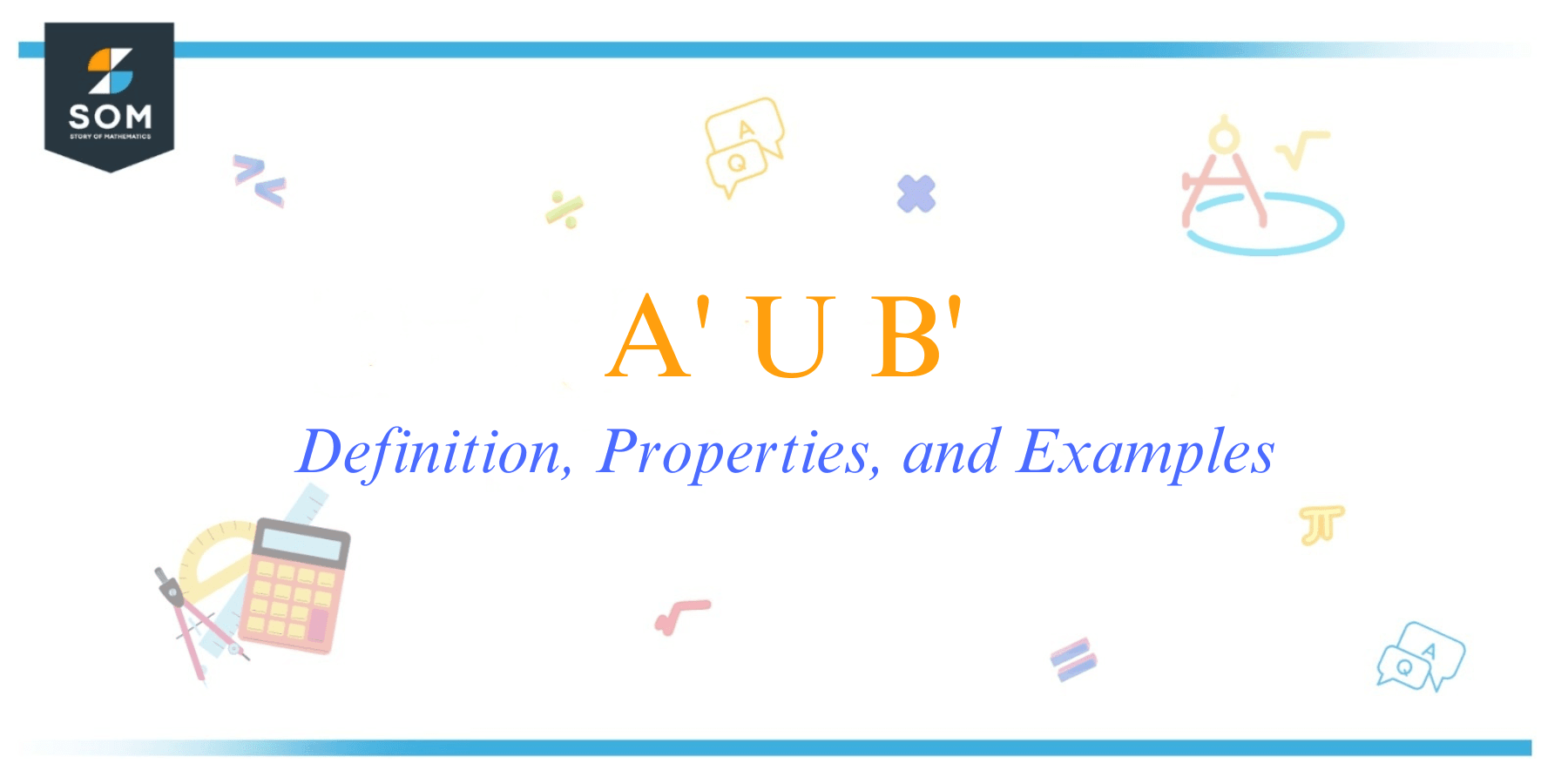JUMP TO TOPIC

We explore the properties and implications of A’ U B’, shedding light on its significance in set theory, logic, and problem-solving.
Definition of A’ U B’
The set operation A’ U B’, read as “A complement union B complement,” represents the union of the complements of two sets A and B. The complement of a set A, denoted as A’, refers to the set of elements that are not in A but belong to the universal set containing all possible elements.
The symbol ‘U’ represents the union of two sets, which results in a new set containing all the elements present in either or both sets. Therefore, A’ U B’ represents the set of elements that are not in A and not in B.
It includes all the elements from the complement of A as well as the complement of B, but excludes any elements that are present in both sets A and B. In other words, A’ U B’ contains elements that are exclusively outside the sets A and B.
By performing the A’ U B’ operation, we can identify the elements that do not belong to either set A or set B, providing insights into the overall complemented relationship between the two sets.
Properties of A’ U B’
Commutativity
The A’ U B’ operation is commutative, meaning the order of the sets does not affect the result. In other words, A’ U B’ = B’ U A’. This property holds because the union operation is inherently commutative, and the complement of a set does not depend on the order of the sets.
Associativity
The A’ U B’ operation is associative, meaning the grouping of sets does not affect the result. In other words, (A’ U B’) U C’ = A’ U (B’ U C’). This property allows us to apply the A’ U B’ operation sequentially without changing the outcome.
Idempotence
The A’ U A’ operation is idempotent, meaning the union of a set with its complement results in the original set. In other words, A’ U A’ = A’. This property holds because the complement of a set contains precisely the elements not present in the set itself.
Distributivity
The A’ U (B ∩ C)’ operation follows the distributive property. In other words, A’ U (B ∩ C)’ = (A’ U B’) ∪ (A’ U C’). This property allows us to distribute the complement operation over the intersection operation within the set expression.
Absorption
The A’ U (A ∪ B)’ operation demonstrates the absorption property. In other words, A’ U (A ∪ B)’ = A’. This property holds because the union of a set with its complement covers all elements present in the universal set, resulting in the complete set A.
De Morgan’s Law
De Morgan’s laws can be applied to the A’ U B’ operation. The complement of the union of two sets is equivalent to the intersection of their complements. In other words, (A U B)’ = A’ ∩ B’. This property allows for transforming between the union and intersection of complements, providing alternative ways to express the complemented set operation.
Exercise
Example 1
Let A = {1, 2, 3} and B = {3, 4, 5}. Find A’ U B’.
Solution: The complement of set A is A’ = {4, 5}. The complement of set B is B’ = {1, 2}.
A’ U B’ = {4, 5} U {1, 2}
A’ U B’ = {1, 2, 4, 5}
Therefore, A’ U B’ = {1, 2, 4, 5}.
Example 2
Consider A = {a, b, c} and B = {c, d, e}. Determine A’ U B’.
Solution: The complement of set A is A’ = {d, e}. The complement of set B is B’ = {a, b}.
A’ U B’ = {d, e} U {a, b}
A’ U B’ = {a, b, d, e}
Therefore, A’ U B’ = {a, b, d, e}.
Example 3
Let A = {1, 2, 3, 4, 5} and B = {3, 4, 5, 6, 7}. Find A’ U B’.
Solution: The complement of set A is A’ = {6, 7}. The complement of set B is B’ = {1, 2}.
A’ U B’ = {6, 7} U {1, 2}
A’ U B’ = {1, 2, 6, 7}.
Therefore, A’ U B’ = {1, 2, 6, 7}.
Applications
Database Querying
In database systems, A’ U B’ is used to perform queries involving negation or exclusion. It helps retrieve data that satisfies certain conditions while excluding elements present in sets A and B. This operation is particularly useful when filtering out unwanted data or identifying outliers in a dataset.
Logic and Boolean Algebra
A’ U B’ is a key concept in Boolean algebra, where logical operations are performed on sets of true and false values. It allows for expressing logical statements involving negation, conjunction, and disjunction. This operation helps analyze logical relationships and construct truth tables for evaluating compound propositions.
Probability and Combinatorics
A’ U B’ plays a role in analyzing probabilities and counting techniques. It helps determine the probability of an event not occurring in either set A or set B. By considering the complemented events, it assists in calculating probabilities, conditional probabilities, and counting outcomes that fall outside specified sets or conditions.
Set Difference
A’ U B’ can be used to calculate the set difference between two sets, A and B. By taking the complement of sets A and B and then performing the union operation, we obtain the elements that are in set A but not in set B. This is useful in various applications, such as identifying unique elements or determining exclusivity between sets.
Pattern Recognition
In pattern recognition and machine learning, A’ U B’ is employed to define decision boundaries and classify objects. By representing sets A and B as positive and negative examples, respectively, A’ U B’ captures the region outside these sets. This operation helps establish decision boundaries and classify new data points based on their relationship to the given sets.
